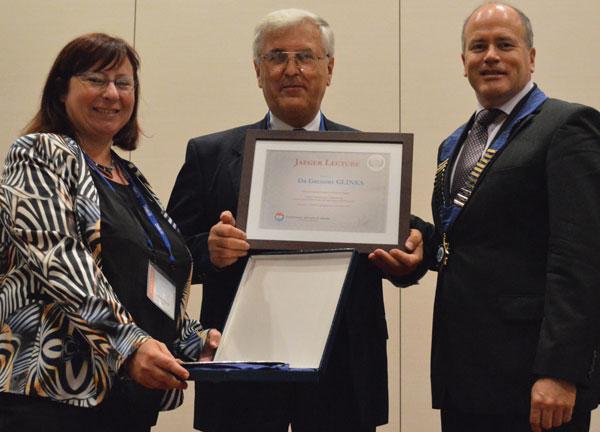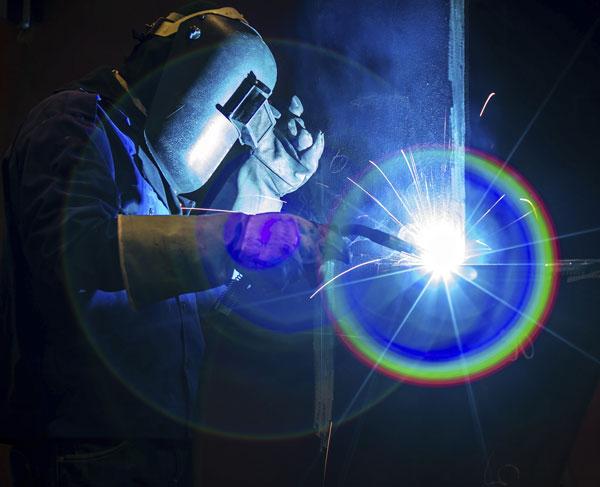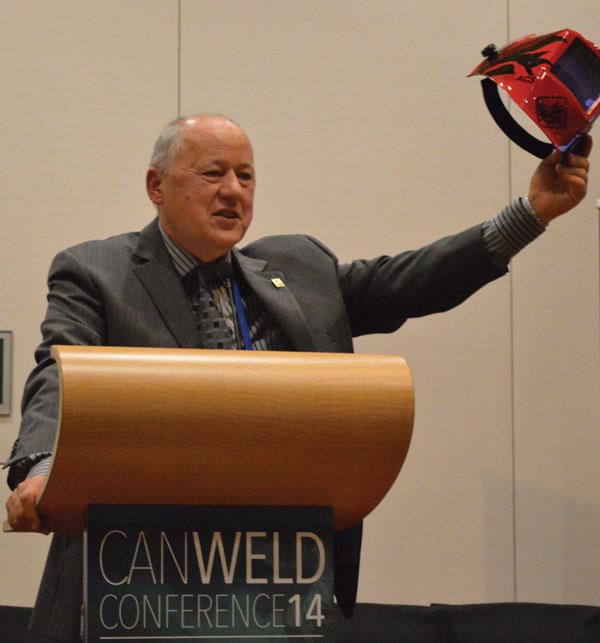- FMA
- The Fabricator
- FABTECH
- Canadian Metalworking
Welding News: Welding Industry Looks North
Theme-based welding conference informs West Coast welders
- By Billy Canning
- January 17, 2015
- Article
- Welding
The first joint Canadian Welding Association (CWA) and International Institute of Welding (IIW) event, the CanWeld Conference 2014 had a theme of “Welding in the Arctic,” focusing on the best welding practices, applications, and advanced research topics associated with welding in subarctic climates.
“I am very pleased with the success of this year’s annual conference. Partnering with IIW and focusing on a specific theme, such as welding in the Arctic, is something new for us, but it was one of the main factors why this conference had such a great turnout,” said Dan Tadic, executive director of the CWA.
More than 200 attendees gathered at Vancouver’s Westin Bayshore, where nearly 50 presenters from all over the world presented technical papers aimed at enhancing the welding industry as a whole and moving it forward in terms of welding in subarctic climates.
“The presenters were first-class,” said Tadic. “Personally, I learned a lot of valuable information and I hope all attendees did as well. The presentations were engaging, informative, and ground-breaking. This was the first time we had such a diverse group of presenters from all over the world. I am very pleased that we were able to get such great talent; it really boosted the appeal of the conference.”
The keynote speaker of the conference was Dr. Gregory Glinka of the University of Waterloo, who presented the Jaeger Lecture and later received a plaque from the IIW in recognition of his outstanding contribution to the welding industry during his career.
Industry advocate for the Welding Technology Institute of Australia (WTIA) and featured speaker Chris Smallbone presented an IIW white paper pertaining to the significance of creating a national welding capability. Another featured speaker, Dr. Duane Miller of Lincoln Electric, made a thorough presentation on a holistic approach to improving fracture resistance in cold-temperature applications.
Dr. Patricio Mendez from the University of Alberta was one of those attendees and featured speakers who enjoyed every aspect of CWC14.
“This year’s CanWeld Conference was the best ever,” said Mendez. “All the presentations I attended were engaging, useful, and given by experts, many of them coming from around the world. The breadth of the topics was fantastic, ranging from pressing issues related to new regulations, to advanced technologies, to state-of-the art research developments.
“The topic of welding in the Arctic is of central relevance to Canada and many other northern countries, and it set a precedent that will be continued internationally in the following years. One of the highlights of this conference was visiting the Seaspan shipyard where we observed how a $200 million investment in new equipment and infrastructure has transformed this shipbuilding company into a world-class facility. Going to the shipyard and then back on the ferry to enjoy the dinner cruise, while networking with interesting colleagues, was another highlight of the conference,” he added.
Dr. Cécile Mayer, chief executive officer of the IIW, was also impressed with the lineup of guest speakers.

IIW Chief Executive Officer Dr. Cécile Mayer and IIW President Gary Marquis present Dr. Gregory Glinka, University of Waterloo, with the Jaeger Lecture award.
“I am thrilled that so many experts worldwide have committed to being a part of this experience and to enthusiastically sharing their knowledge on a variety of related topics,” said Mayer.
Welding at Low Temperatures
Canadian Welding Bureau (CWB) Global Welding Engineer Ken Thorn said welding in the Arctic can pose inherent risks, such as hydrogen-induced cracking, so it’s imperative to follow proper welding procedures to minimize such issues.
“Welding steel that is cold can increase the possibility of hydrogeninduced cracking. To prevent this, many codes and standards require welding procedures to be specifically developed for use at low temperatures. CSA Z662-11, Oil and Gas Pipeline Systems, Section 7.9.7 deals with welding at low temperatures,” said Thorn.
Tadic said the core focus of the conference “brought nearly 50 leading welding experts from around the globe to discuss issues of common concern while working in subzero environments.”
Collaboration with other jurisdictions regarding best welding practices in subzero environments is important to the overall success to expand the industry.
“We are very fortunate to be a representative body for Canada and working with the International Institute of Welding to bring solutions through sharing technical knowledge about research and many issues faced by our industry. As an example, Finland has similar subzero climate that we deal with. We can learn from each other along with other countries that are in the Arctic region,” said Tadic.
subscribe now


Keep up to date with the latest news, events, and technology for all things metal from our pair of monthly magazines written specifically for Canadian manufacturers!
Start Your Free Subscription- Trending Articles
- Industry Events
MME Winnipeg
- April 30, 2024
- Winnipeg, ON Canada
CTMA Economic Uncertainty: Helping You Navigate Windsor Seminar
- April 30, 2024
- Windsor, ON Canada
CTMA Economic Uncertainty: Helping You Navigate Kitchener Seminar
- May 2, 2024
- Kitchener, ON Canada
Automate 2024
- May 6 - 9, 2024
- Chicago, IL
ANCA Open House
- May 7 - 8, 2024
- Wixom, MI
















